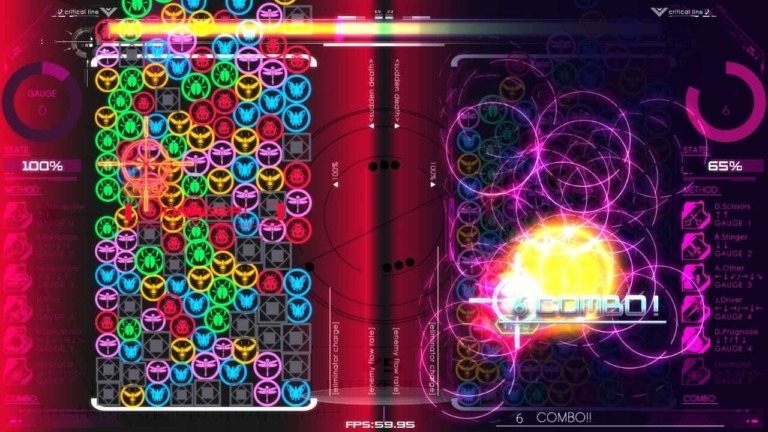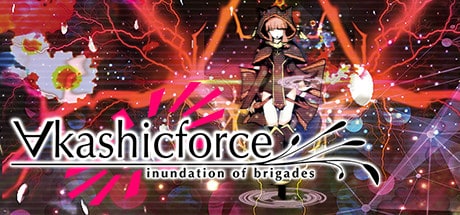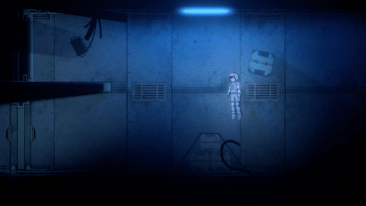Akashicforce by Endless Shirafu
I was pretty sure I knew what I was in for with Akashicforce (stylized “∀kashicforce”): a nice, relaxing match-three or Puzzle Bobble type thing with some science fiction narrative snippets to hold my interest.
Something low key and relaxing with just the right amount of atmosphere.
I couldn’t have been more wrong, now my hands are killing me, and nothing makes any sense. And yeah, that applies to the mechanics and what I’ve managed to discern of the story.
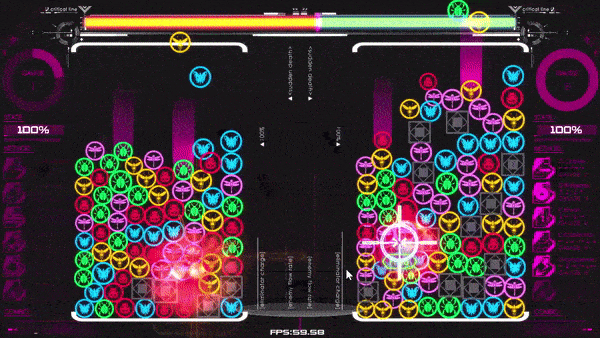
Round One: Fight!
See, the thing with Akashicforce is that despite its superficial resemblance to casual action puzzles (right down to the brightly colored orbs dropping from top screen, emblazoned in this case with insect insignia), it plays a lot more like a fighting game.
There’s a big emphasis on combos and special moves. Given that the only special move I ever managed to pull off consistently in Street Fighter 2 was Ken and Ryu’s fireball – and I’m loathe to admit how many quarters it took me to get even that far – and that I’m not sure I’ve even touched the genre since then, you can imagine I didn’t take to this one with as much ease as I’d initially hoped.
Special moves are performed via keyboard or gamepad motions in between presses of the “Command” key (which defaults to “X” on the keyboard). More powerful moves like “The Eliminator” change the game mode itself, turning it from puzzle fight to rhythm game.
And even on the very first tutorial mission, the “enemy” blocks drop at such a frantic rate that the difference between a perfect combo attack and “Game Over” can be measured in milliseconds.

It’s All Greek to Me
The game’s ultimate frustration – which I’m coming to believe is also evidence of genius – is that despite its familiar visual and control elements, Akashicforce is super confusing.
Part of that comes from the unique nomenclature that developer Endless Shirafu has applied to everything. It’s surprising enough to be faced with a game that looks like a more neon version of Dr. Mario and end up needing to consult the instruction manual, but then to be faced with text like this?
The Assist-type Methods affect the Fields or the Orchids. For example, Shaty’s “Almighty Tranquilizer” turns Hindrance blocks into Almighty blocks; Himeno’s “Equip Capacitor” summons Special blocks capable of automatically restoring her Method gauge; Ageha’s “Danger Prognosis” reduces damage to the Providence gauge for a time and sends the Hindrance blocks over to the opponent while the Method is effective.
It makes some of the more esoteric combat systems from the Final Fantasy series look like Pong in comparison.
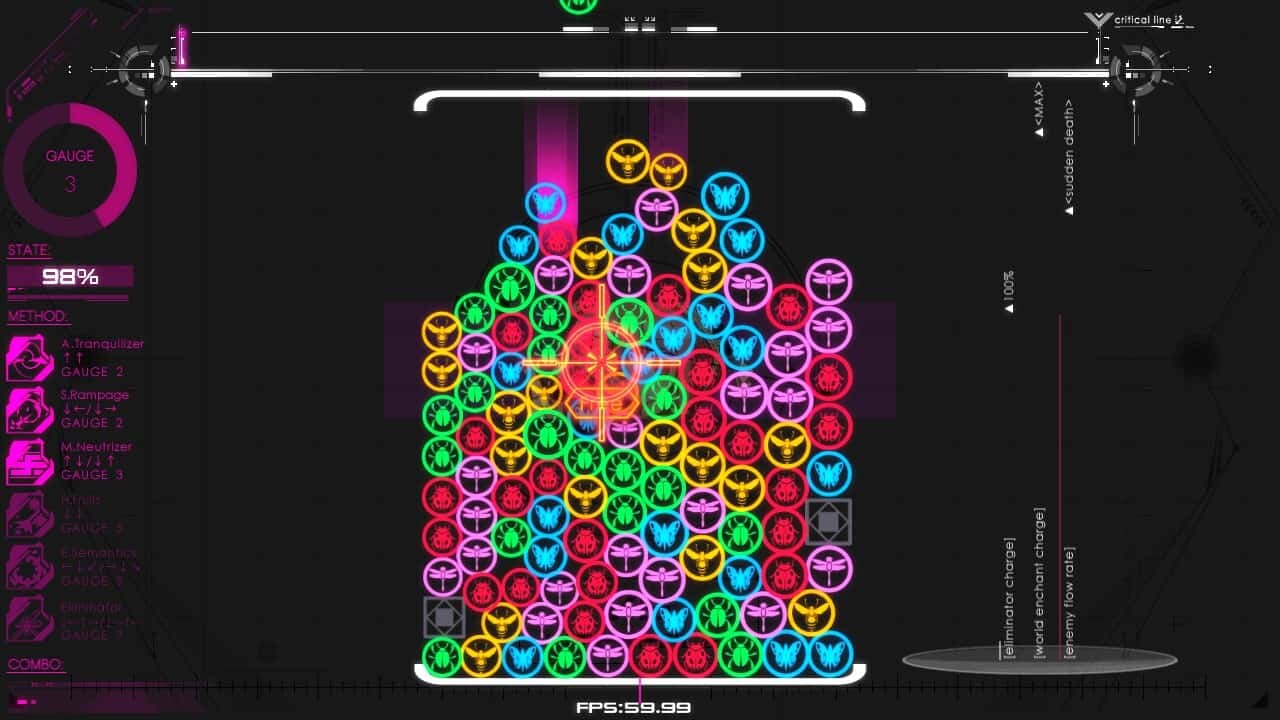
Dancing about Architecture
Weirdly, though, you do get into a groove. The developer also says in the instruction manual that you should “Just feel it” and chain your attack combinations together “in a stylish way.” For me, that means a lot of frantic key-presses (and a flashback to data entry-related repetitive strain injuries).
The less I tried to make sense of things visually by focusing on specific groupings of colored blocks, the easier things got. That isn’t to say it’s easy, by any means, but at least I wasn’t embarrassing myself by failing the first few tutorial missions anymore.
Perhaps the complexity here is an elaborater feint in much the same way the blocks are (for example, the colors of the blocks don’t mean anything, by and large, and don’t particularly affect gameplay). Pay no attention to what you think you know, and just get into the groove.
It’s almost like the developer has assembled all of the components of a particularly complex symphony, but the real show is the street corner saxophonist busking outside of the concert hall.

Fire Flowers
The story is as initially opaque as the game mechanics. Revealed in between-round dialogues among its various anime girl characters – much like the Acceleration of SUGURI and Sora games, also localized from Japan by the same publisher – it’s got something to do with an “Anti-Enemy Squad” composed of magical girls that are also flowers…or maybe “Orchids” are just their code name.
But the “enemy” blocks are marked with insect symbols, and insects are often the enemies of plants so…in any case, I’m equally confused and fascinated, and the oblique hints at Lovecraft-inspired cosmic horror just sweeten the pot while also adding to the overall sense that I have no real idea what’s going on.
It doesn’t help that this is actually the sequel to an earlier game, Akashicverse, which laid the foundation for the story.
Hopefully there’s enough interest that the publisher will bring that one to the English-speaking Steam community, as well. Fruitbat Factory is doing great work highlighting the innovative work of the Japanese indie scene, and this is just the latest example of their fantastic – albeit heavily twitch-focused – work.
Akashicforce is available via Steam.
[xrr rating=”4/5″]
Watch the official trailer for Akashicforce below.

